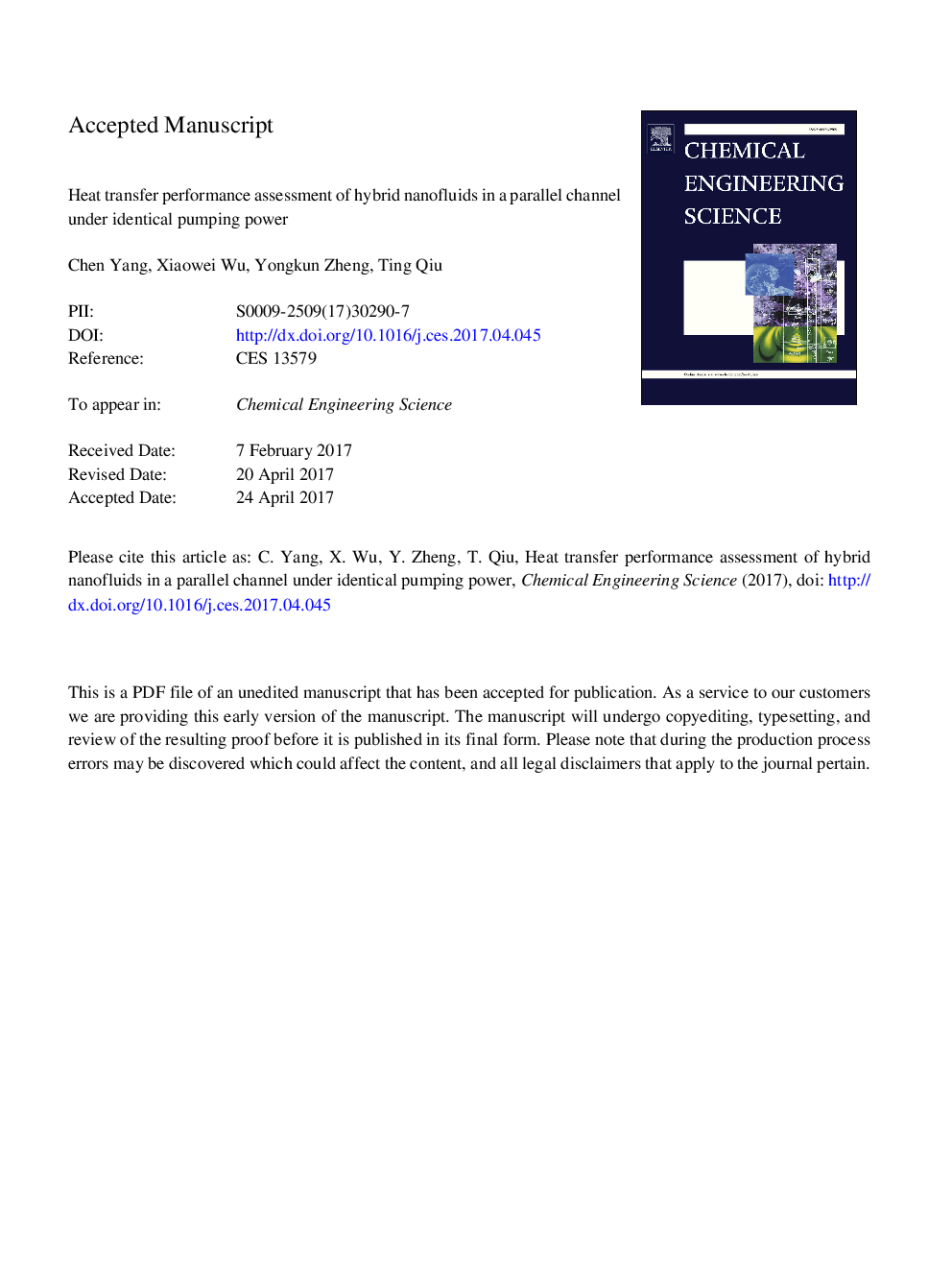| Article ID | Journal | Published Year | Pages | File Type |
|---|---|---|---|---|
| 4763949 | Chemical Engineering Science | 2017 | 39 Pages |
Abstract
In the study, a mathematical model of hybrid nanofluids was established with the consideration of nanoparticles migration, which has significant influence on the thermophysical properties of hybrid nanofluids. In order to investigate heat transfer and friction factor characteristics of hybrid nanofluids in a channel, the corresponding governing equations were solved by using the Runge-Kutta-Gill method. A Performance Evaluation Criteria (PEC) was used to assess heat transfer performance of hybrid nanofluids under identical pumping power. Two hybrid nanofluids, which are alumina-titania/water nanofluid and alumina-zirconia/water nanofluid, respectively, were discussed. The results clearly indicated that alumina-titania/water nanofluid exhibits higher Nusselt number and lower friction factor than alumina-zirconia/water nanofluid. Moreover, it has been found that with the variation of volume fraction ratio of two single-particle nanofluids, maximum PEC values of alumina-titania/water nanofluid were observed, proving that alumina-titania/water nanofluid has better heat transfer performance than either alumina/water nanofluid or titania/water nanofluid under identical pumping power. The effects of NBT1 variation and NBT2 variation of alumina-titania/water nanofluid on Nusselt number and friction factor were also investigated. It is interesting to note that minimum PEC values were observed under the variation of NBT2 whenNBT1/NBT2 is approximately 6. However, maximum PEC values were observed under the variation of NBT1 when NBT1/NBT2 is approximately 0.5.
Related Topics
Physical Sciences and Engineering
Chemical Engineering
Chemical Engineering (General)
Authors
Chen Yang, Xiaowei Wu, Yongkun Zheng, Ting Qiu,
